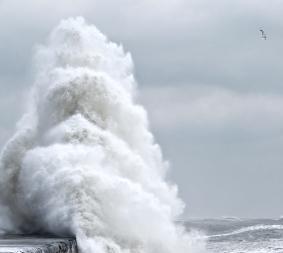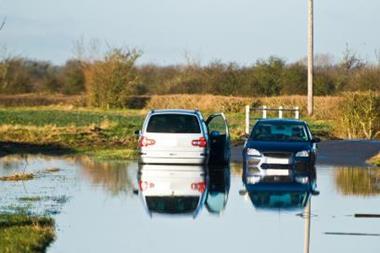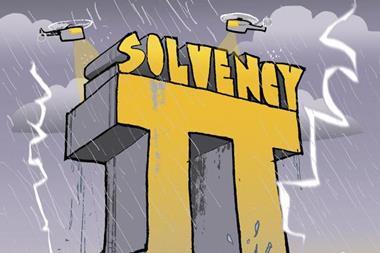The general effects of a global temperature increase they may contribute to a decrease in property risk in some places, while increasing it at others. By Dance Zurovac-Jevtic, Rebecca Cheetham and Caroline Daniell
Reports published in 2007 by the Intergovernmental Panel on Climate Change (IPCC) listed the major effects of climate change and indicated that that parts of the world will probably have an increase in the occurrence of heat waves, with the likelihood that this will increase the intensity of tropical storms. However, the identification of more general effects of an increased global temperature remain more challenging, as they may contribute to a reduction in property risk in some places, while increasing it at others.
From a European perspective, extra-tropical cyclones and floods are the natural catastrophes insurers fear most. Several recent studies investigating the future storm climate in Europe have presented widely differing results. While some studies have found a tendency for the development of more intense systems capable of generating extreme wind events for several parts of Western Europe, others believe there will be a decrease in the average number of cyclones occurring in Europe throughout the year. Despite this divergence, there is general agreement that under the scenario of a warming climate, there will be a tendency to a poleward shift in European windstorm tracks. Inconsistencies between scientific studies originate primarily from the complex nature of the atmospheric dynamics that govern the formation of extra-tropical cyclones. Climate models used in scientific studies to investigate the effect of global warming on storm formation show two feedback mechanisms that operate in parallel to one another.
One is a positive feedback mechanism that determines that global warming will increase heat-transfer between the atmosphere and the oceans, thus generating storms of increased size and intensity. The other is a negative feedback mechanism that determines that polar regions will warm more than the tropical oceans, thus decreasing the temperature differential at the polar front and resulting in an overall decrease in storm formation. Determining which of these mechanisms is predominant will be a critical step in resolving the current scientific debate. Until more convincing evidence is presented, it seems sensible to conclude that winter storm frequency is unlikely to change dramatically in the coming decades, although there may be a slight increase in the formation of more intense storms.
To gain a better understanding of how future climate change may affect the frequency, strength and position of European wind storms, especially at more local scales, studies in which climate model results are coupled with catastrophe model projections may help insurers understand future changes to their portfolio risks.
More intense precipitation
Climate simulations performed on a European scale, however, have consistently shown that a warmer climate is likely to increase the occurrence of more intense precipitation, and so elevate the risk of flood across Europe. More locally, there is less clarity in how precipitation and related flooding events may react to climate change. In such cases, regional climate models coupled with hydrological models can cast more light on the prospects for flooding in individual countries.
To determine whether European insured losses will increase due to future climate change, a distinction must be made between losses from flood, which are likely to increase, and winter storm losses, which are less likely to be affected by near term climate changes. On a longer term global scale, however, the impact of climate change during the present century will probably become one of the primary forces determining increases in insured losses, together with socio-economic trends, such as general population growth, population concentration in high risk areas and the continued increase in insurance penetration.
The increasing exposure of large portfolios to natural catastrophe will require innovative risk management approaches in the future. New solutions, including different insurance linked securities, such as catastrophe bonds, industry loss warranties and sidecars, have emerged as a result of the growing appetite for securitizations of peak and non-peak risks. Along with more traditional forms of insurance and reinsurance, these new products will give the insurance industry the scope to adapt and take advantage of the challenges posed by the impact of global climate change. Many questions about climate change remain unanswered. A forthcoming conference organised by the Lighthill Risk Network in London will discuss some of them.
Postscript
Dance Zurovac-Jevtic is a meteorogist and vice president in the Stockholm office of Guy Carpenter. dance.zurovac-jevtic@guycarp.com Rebecca Cheetham is a an analyst in Guy Carpenter's European model development team. rebecca.cheetham@guycarp.com Caroline Daniell is director of the Lighthill Risk Network. caroline.daniell@lighthillrisknetwork.org www.lighthillrisknetwork.org




















No comments yet